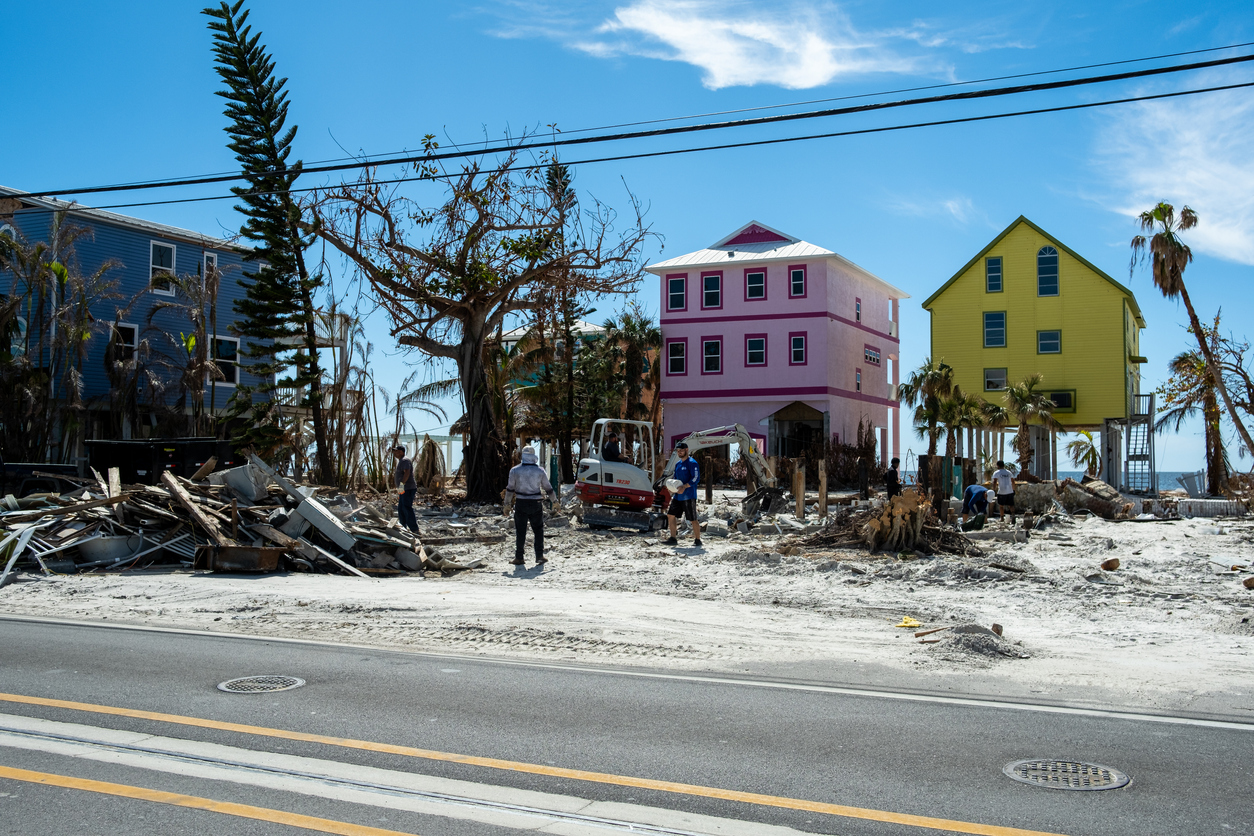
Building for the Future
Enhancing Community Resilience through Updated Building Codes
Author: Scott Stoermer, MPA, MS - Managing Director, Witt O'Brien's
In recent years, we've witnessed a significant increase in the frequency and intensity of natural hazards, emphasizing the need for more resilient communities. A critical factor in this journey toward resilience is the adoption and enforcement of updated building codes. These codes, standardized and effectively implemented, are crucial in mitigating risks and reducing the costs associated with natural disasters.
Findings from the 2023 National Preparedness Report
FEMA’s 2023 National Preparedness Report offers a stark illustration of the current situation. There's an inconsistent adoption of building codes across the United States—notably in the Midwest, New England, Mid-Atlantic, and parts of the South. In these regions, much of the infrastructure predates revised disaster-informed standards, leaving it vulnerable to today's environmental challenges. Buildings designed for a different era are now facing the evolving threats of floods, tornadoes, and storms that are increasingly venturing beyond traditional floodplains.[1]
Success Stories
Hurricane Ian serves as a powerful case study. While widespread damage was inevitable, stories of resilience emerged from communities that had adopted and enforced stricter building codes. [2] Take Punta Gorda, for instance. After being severely hit by Hurricane Charley in 2004, the city rebuilt using updated building code standards. When Hurricane Ian—one of the most powerful storms to ever hit the U.S.—struck Punta Gorda, the areas rebuilt to these updated standards experienced minimal damage.[3]
Steps Forward for SLTT Governments
The journey for State, Local, Tribal, and Territorial (SLTT) Governments is challenging but essential. Updating building codes involves navigating complex political and bureaucratic landscapes. Moreover, retrofitting existing infrastructure is a daunting, and expensive, task due to the vast number of older buildings and the economic and logistical hurdles involved. However, this challenge is not insurmountable.
The key lies in creating a comprehensive plan that not only addresses immediate infrastructure needs, but also considers long-term sustainability and adaptability to future hazards. Prioritizing critical infrastructure and educating the public on risks and other stakeholder engagement are necessary first steps.
Funding Support
There are numerous resources available to support these efforts, encompassing a range of Federal, state, and even private funding opportunities. At the Federal level there are programs like FEMA's Hazard Mitigation Grant Program (HMGP), Building Resilient Infrastructure and Communities (BRIC) program, and the Public Assistance (PA) program. Additionally, the Community Development Block Grant (CDBG) program—administered by the U.S. Department of Housing and Urban Development (HUD)—offers another vital avenue for funding. Even the most recent Climate Pollution Reduction programs have objectives, and funding, focused on increased resiliency while also addressing pollution.
State-specific grants also play a crucial role. Many states offer their own funding programs focused on disaster resilience and infrastructure enhancement. For example, the California Seismic Safety Commission provides grants for earthquake-resistant construction, while Florida’s Division of Emergency Management offers funding for hurricane-resistant structures.
Despite the availability of these resources, securing funding remains a competitive and complex process. Collaborating with established emergency management consultants, such as Witt O’Brien’s, can provide valuable insights into the priorities of these diverse funding sources. These consultants can assist in developing well-structured applications, tailoring them to meet specific grant requirements, and effectively presenting a strong justification of need. Such strategic partnerships can significantly enhance a community’s chances of securing the necessary funds to update their building codes and invest in resilient infrastructure.
In conclusion, while updating building codes and retrofitting outdated structures is a complex, multi-faceted endeavor, it is indispensable for the safety of our communities. The experience of places like Punta Gorda underscores the tangible benefits of such efforts. Facing the escalating challenges of natural hazards, the time to act is now. Through collaborative and strategic efforts, we can enhance our resilience and build a safer, more sustainable future for all.
- National Preparedness Report 2023”. www.fema.gov. 2023-12-05. Retrieved 2023-12-12.
- Bruneau, Michel (2023-02-07). "Mother Nature 'weeds-out' non-resilient construction - Florida Specifier". floridaspecifier.com. Retrieved 2023-12-12.
- "Why many homes and buildings in this Florida city still stand, even after Ian". Washington Post. ISSN 0190-8286. Retrieved 2023-12-12.

Scott brings more than 27 years of incident and emergency management experience to lead our Government Solutions Readiness and Response Practice. He served in a variety of capacities over 24 years in the Coast Guard, is a Nationally certified Type 1 Incident Commander, and is interested in the critical intersections of response and recovery in both disaster-driven and non-disaster driven crises.
